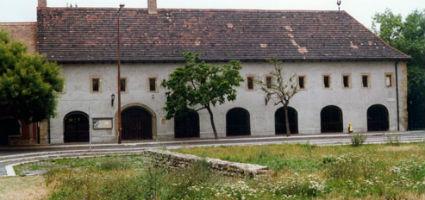2024. April 18. Thursday
Budapest Gallery Exhibition Hall - Budapest
 |
Address: 1036, Budapest Lajos u. 158.
Phone number: (1) 388-6784
E-mail: info@budapestgaleria.hu
Opening hours: Tue-Sun 10-18
|
The exhibition has closed for visitors.
2021.07.29. - 2021.10.03.
Knowledge introduced by natural history collections can be manifold. Although they are believed to have an objective, exact nature, that they are distanced from personal interpretation, it is known how many beliefs and misunderstandings, economical and political intentions shape them, how diverse, sometimes even contradictory knowledge can be deducted from collections. And how much remains hidden in them.
The exhibition consists of – at least seemingly – natural scientific research materials and collections that were presented or initiated by contemporary artists; the works follow the trails of forgotten or lost, invisible and unfamiliar knowledge, and undertake to unravel or create them.
Invisible or unfamiliar knowledge: this combination of words is intentionally paradoxical, as we can mostly have knowledge of things that we are familiar with, so unfamiliar knowledge refers to the gaps in the building blocks of rationality, to the place of imagination. From this point, the past becomes visible and the future imaginable. Through the exhibited works, the presence of creatures with magical attributes, the interconnectedness of creation myths and scientific thinking, the tiny signs of ecological crisis become recognizable. These objects function as the homes of „the spirit of place” even when their inhabitants remain unknown.
The stones, trees, galls formed by the sea, and other organic or almost organic materials that are lined up here hide such knowledge that is inaccessible for many, and while their existence is known, their substance is not so much. The artists, who present collections (or create them through presentation), enable dimensional shifts in these tiny, fragmented objects that overarch centuries, and by supporting imagination, they make it possible to experience the attachment and belonging to the earth, to the material again. To find the objects, we mostly need to look at the ground, at the places of our steps behind and ahead, at the traces and the possibilities of what is yet to come. The objects found this way often don’t fit together, their hiatus makes the picture more realistic, for which imagination and knowledge function as binding agents.
The exhibition consists of – at least seemingly – natural scientific research materials and collections that were presented or initiated by contemporary artists; the works follow the trails of forgotten or lost, invisible and unfamiliar knowledge, and undertake to unravel or create them.
Invisible or unfamiliar knowledge: this combination of words is intentionally paradoxical, as we can mostly have knowledge of things that we are familiar with, so unfamiliar knowledge refers to the gaps in the building blocks of rationality, to the place of imagination. From this point, the past becomes visible and the future imaginable. Through the exhibited works, the presence of creatures with magical attributes, the interconnectedness of creation myths and scientific thinking, the tiny signs of ecological crisis become recognizable. These objects function as the homes of „the spirit of place” even when their inhabitants remain unknown.
The stones, trees, galls formed by the sea, and other organic or almost organic materials that are lined up here hide such knowledge that is inaccessible for many, and while their existence is known, their substance is not so much. The artists, who present collections (or create them through presentation), enable dimensional shifts in these tiny, fragmented objects that overarch centuries, and by supporting imagination, they make it possible to experience the attachment and belonging to the earth, to the material again. To find the objects, we mostly need to look at the ground, at the places of our steps behind and ahead, at the traces and the possibilities of what is yet to come. The objects found this way often don’t fit together, their hiatus makes the picture more realistic, for which imagination and knowledge function as binding agents.